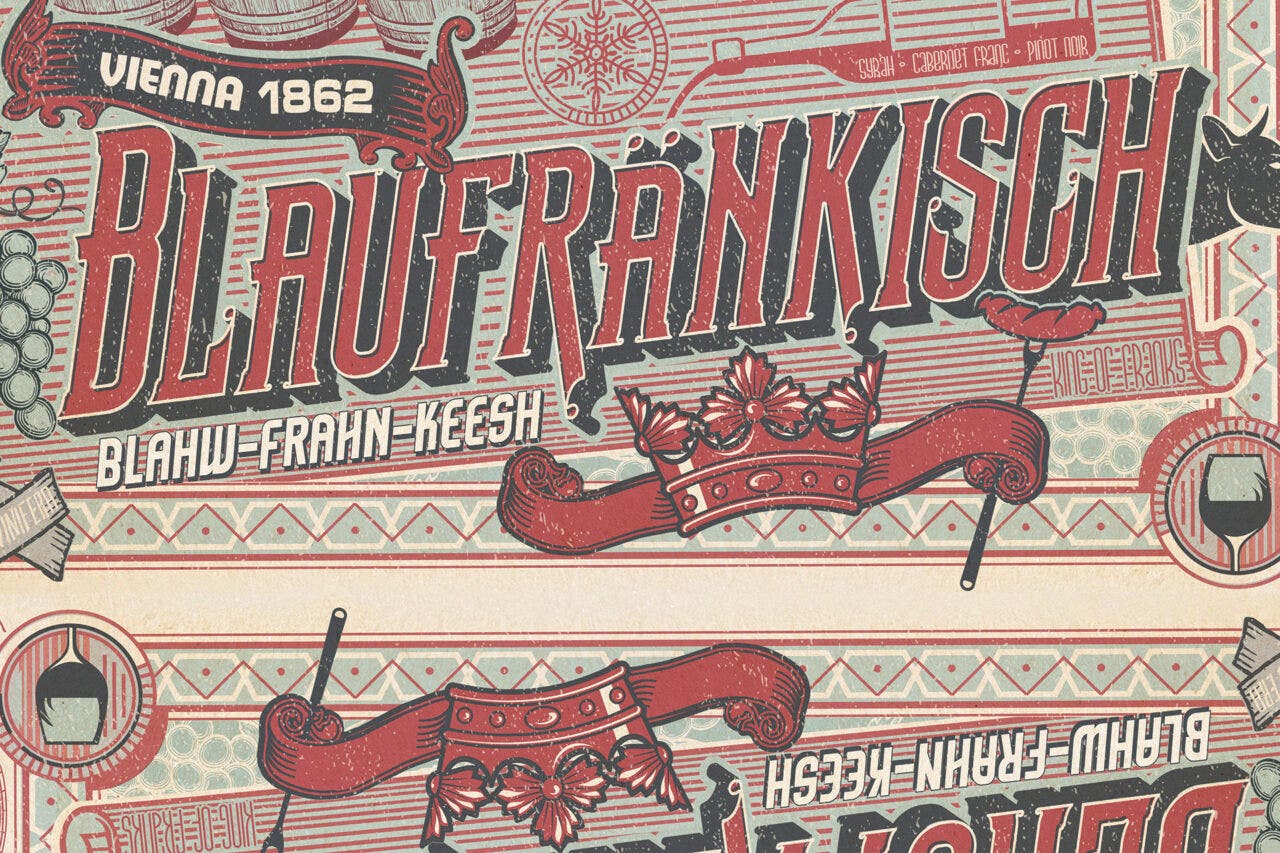Blaufränkisch originated within what was the Austro-Hungarian empire, where it’s still prevalent today. The suffix –fränkisch dates to the early Middle Ages and was used in countries where German was spoken to designate a family of wine grapes considered superior, promulgated by Charlemagne, King of the Franks.
It was in 1862 that the name Blaufränkisch first appeared, at an exhibition in Vienna. In 1877, the grape turned up in Germany under the name Lemberger, and then 13 years later in Hungary as Kékfrankos, the literal translation of Blaufränkisch.
The grape’s other names from traditional growing regions include Franconia or Frankonia (northern Italy), Frankovka (Croatia, Czech Republic, Serbia), Gamé (Bulgaria), Burgund Mare (Romania), Frankovka Modrá (Slovakia) and Modra Frankinja (Slovenia).
It performs best in cool continental climates, where it makes beautiful, perfumed wine reminiscent of Syrah, Cabernet Franc or Pinot Noir. It’s also highly site specific. Considering the general movement toward purity and transparency, and slimmer, fresher wines, Blaufränkisch is an effortless fit.
United States
In New York’s Finger Lakes region, where some 70 acres of the grape are planted, it’s labeled either as Lemberger or Blaufränkisch. From the earliest days of the New York’s wine industry, Lemberger was pegged as an ideal grape for the typically frigid winters. The harsh climate that shares similarities with Austria and Germany didn’t go unnoticed by industry pioneers. “We get full flavor ripeness and quality wine even in challenging years,” says Nancy Irelan, co-owner of Red Tail Ridge Winery.
In Washington, trials to determine the commercial viability of Vitis vinifera, led by Dr. Walter Clore in the late 1960s and early ’70s, Lemberger shined, and there was even talk that it could be the state’s flagship variety. Today, just over 50 acres are planted to the grape statewide.
Canada
Blaufränkisch was planted in British Columbia’s Okanagan Valley in 1930. It’s cherished by the half-dozen wineries who produce it. But Canada’s most shining example comes from the other side of the country, in Nova Scotia: Lightfoot & Wolfville’s excellent Terroir Series Kékfrankos.
“Our cool climate and long growing season accentuate the grape’s fresher flavors”, says Head Winemaker Josh Horton.
Australia
The Adelaide Hills are Australia’s Blanfränkisch-growing epicenter, and Hahndorf Hill Winery in particular, where it was first planted in the early 1980s by a German immigrant. Current owner Larry Jacobs has since planted more.
Celebrated Yarra Valley producer Mac Forbes also admires Blaufränkisch, as he worked formerly in Austria’s Carnuntum region. He has since imported his own massale selections and planted them in the estate’s dry-farmed vineyard. The first bottlings are eagerly anticipated.
Published: January 9, 2019















